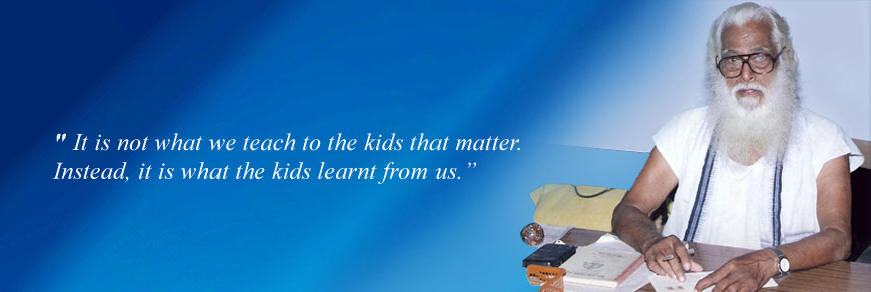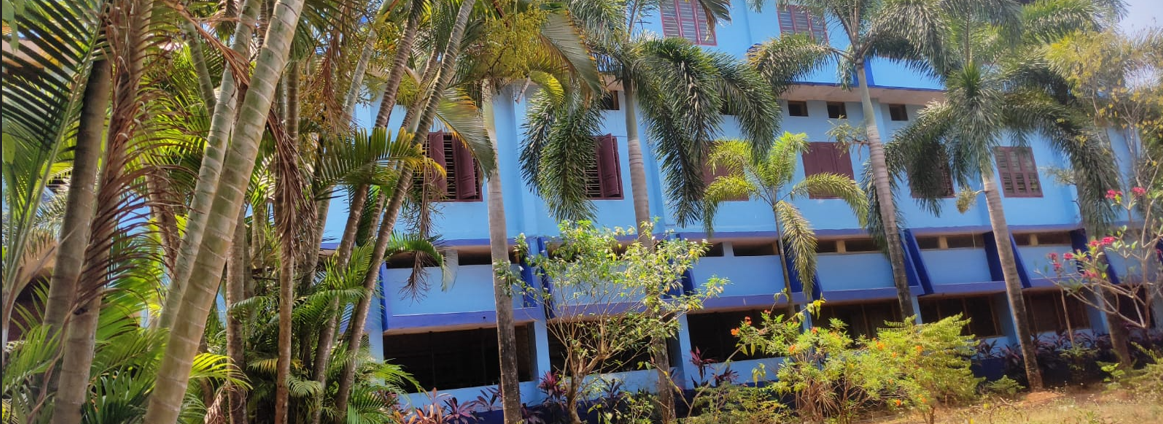The Founder - Biography (As told by Shri. Kumaran to Dr. Syam Prasad Anand, Grandson)

The Freedom fighter
Shri. K. Kumaran was born to Shri. Madathil Narayanan Nair and Smt. Kollaikal Devaki-amma on Jan 17th of 1920, as the second eldest of 10 children. He finished his schooling from Thiruviluamala Government High School. Subsequently, Shri. Kumaran joined Government Victoria college Pala-kkad, in the year 1941 for his intermediate. The fight for India's independence from the British was gathering momentum and entering its final phase at this time. While in college he was inspired by Mahatma Gandhi's call for fight against the British and took part in Quit India Movement. Quite expectedly he was expelled from the college for this action. Soon, his involve-ment in activities against the "British Raj" led to his arrest. He was jailed in Alippuram, Bellary for his anti-British activities. Inspired by Mahatma Gandhi's call to "Do or Die",
Shri. Kumaran escaped heroically from Allipuram Jail in 1943. He was arrested in Madras but managed to escape again from police custody. During a second conviction in Bellary jail he was subjected to torture and put in iron fetters under Col. Howe orders. He was released in 1944.
Birth of Gandhi Seva Sadan
Soon after release he went to Mumbai as a full time congress worker and captained the volunteer team for the 1945 AICC session. During this session, he came into contact with Mahatma Gandhi and several other great congress leaders. Mahatma Gandhi believed that India lived in its villages. Heeding to Mahatma Gandhi's call to the young generation to live and die in the villages of India,
Shri. Kumaran set forth and put in the place the first modest steps for what was to become a big Institution in his native village Perur. With the help of a small sum donated by few village elders he bought 12 charkas (cotton spinning machines- which was at that time the symbol of the aspirations of an independent India). That was the inception of Gandhi Seva Sadan (GSS).
In 1947, GSS started the first Basic Education School, which was based entirely on the principles of Gandhian education. He was assisted to a great extent by Smt. Sarojini, who got trained in Basic Education in Gandhi Ashram, Thiruchangode and was fortunate to personally recieve the certificate from Mahatma himself. Soon Sarojini married Kumaran and both became involved in Basic education in Perur village. During 1947, GSS also started its village industries section, whose products became very popular in the area and provided employment to a few hundred people. In 1948, wife of Sir. Archi-bald Naye (British High Commissioner to India) asked Shri. Kumaran to be in charge of the Faridabad refugee camp and offered him all financial support that is required for running GSS, if he took up that responsi-bility. Though GSS was not very prosperous,
Kumaran felt that money alone would make no difference to his village. He was convinced that his personal presence and involvement is essential for the activities of GSS. There-fore he stayed back in his native village and continued his work.
Philosophy and Vision
Shri. Kumaran believes that education and health are the most important ingredients for the success of an individual. In 1949, GSS started Kelappaji Memorial Hospital for the benefit of the villagers.
GSS continued to grow with the introduction of a teacher's training institute in 1951 and a Kathakali Academy in 1953. As a result of his perseverance and hard work, GSS presently occupies a central spot in the areas of art and school education in Kerala State. GSS has been graced by several national leaders among whom the names of Pandit Jawaharlal Nehru, Acharya Kripalani, Jayaprakash Narayan, Acharya Vino Bhave, Dr. S. Radhakrishnan and Kulapathi K. M. Munshi are worth mentioning.
During 1970s Sadanam employed around few hundred people and contributed a great deal to the development of the village of Perur. Today's Sadanam also employs around hundred people and has sprung back to play an active role in art and school education in Perur.
Kumaran believed in Gandhi's words that "there is enough for everyone's needs, but not enough for everyone's greed" and therefore he encourages every individual to contribute to a just cause. He pointed out that he decided to do social service at a time when there was only everything to loose and nothing to gain. Kumaran also used to enjoy music and poetry and when asked to pick his choice poem he recited Changampuzhas "kapadalokathil athmaarthamaayoru hridayam undaayathaanen paraajayam", with some inner meaning. When asked why he chose to start a Kathakali academy, when there were so many traditional art forms, Kumaran said that it is a complete form of theater. He feels quite strongly that no other form of art comes anywhere close to Kathakali in the constitution of its visual, musical and theatrical aspects. Interestingly, it was Sarojini's grandfather Kakaad who started the Kakkad Kathakali yogam, and handed it to Mukunda Raja his nephew, who gave it to Vallathol. Padmashri Keezhpadam Kumaran Nair who was a guru in Sadanam, feels that Kumaran has been quite uncompromising in his determination to run Sadanam even under most challenging situations.
He recalled that though there were several enthusiastic attempts to run Kathakali yogams in the last century,
the only institution that survived without any government help was Sadanam. Sadanam Kathakali Academy, which started in 1953 started receiving government grants only since 1991.
Before he left this world, Kumaran felt that the politicians as well as the public personalities had started recognizing his work and it has encouraged him to become optimistic about the Institutions and our country's future. He felt that any recognition of Sadanam's activities would help it to carry on with its activities and pass on such benefits for the development of the region. When we last spend sometime together before he passed away, Shri. Kumaran summed up his emotions by reciting another poem-one of his favorites-
"Thannathilla paranullukaatuvaan onnume naranu upaayam easwaran,
Bhashayithapurnam innaho vannupom pizhayum arthasankayaal"

